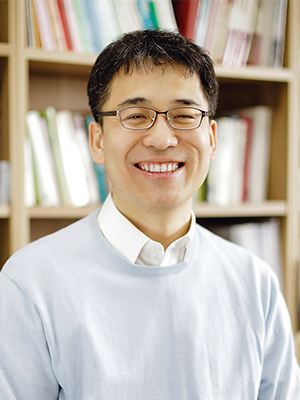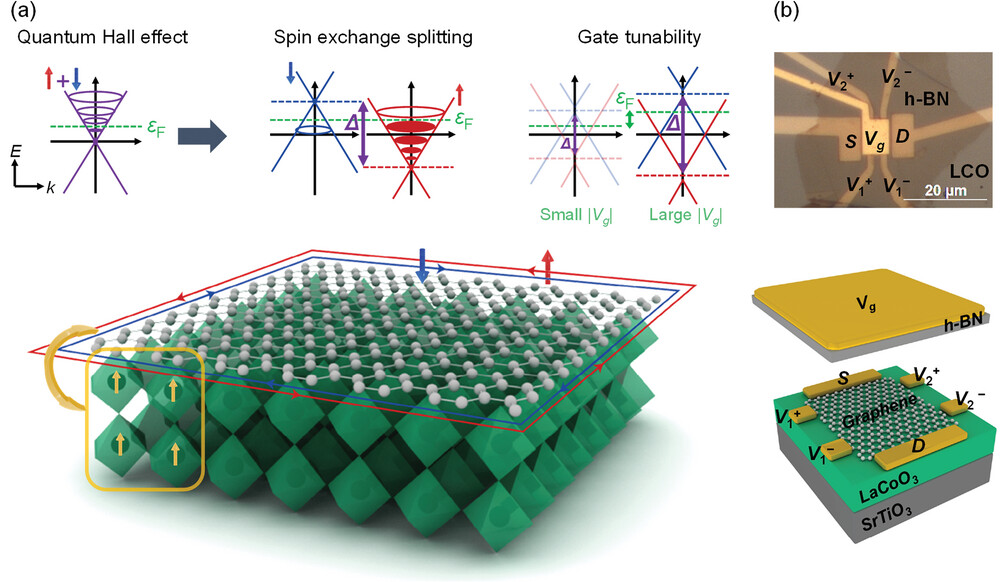본문
Electrically Controlled Spin States in 2D Graphene Hybrid Devices

by Prof. Dong Seok Suh
Department of Physics
PURE Research Profile
energy.suh@ewha.ac.kr
This research highlights an innovative approach to controlling the physical properties of two-dimensional (2D) materials by leveraging device-based methodologies. Through the creation of a hybrid structure combining graphene with LaCoO3 (LCO), the study demonstrates a novel method to manipulate spin states using electrical control, offering new possibilities for quantum and spintronic technologies.
Graphene, celebrated for its exceptional electronic characteristics, is paired with LCO, a magnetic insulating material, in this breakthrough experiment. The interaction between the materials at their interface enables precise tuning of spin exchange splitting—a phenomenon integral to advanced quantum devices. Importantly, this approach preserves the intrinsic qualities of graphene, overcoming limitations of conventional methods that often involve structural compromises or defects.
By utilizing electrical fields and temperature adjustments, this experiment showcases a practical and scalable way to modulate the spin properties of 2D materials. The findings not only enhance the understanding of 2D material systems but also open pathways for their use in energy-efficient electronics, quantum computing, and highly sensitive sensors.
This study sets a benchmark for integrating experimental innovation with advanced materials, offering a transformative perspective on the potential applications of 2D material systems in cutting-edge technologies. This work was conducted as part of a successful collaboration between Professor Woo Seok Choi of Sungkyunkwan University and Professor Dongseok Suh of Ewha Womans University.

* Related Article
Dongwon Shin, Hyeonbeom Kim, Sung Ju Hong, Sehwan Song, Yeongju Choi, Youngkuk Kim, Sungkyun Park, Dongseok Suh, Woo Seok Choi, Electrically Tunable Spin Exchange Splitting in Graphene Hybrid Heterostructure, Advanced Functional Materials, Vol. 34, Issue 11, 2311287, March 2024